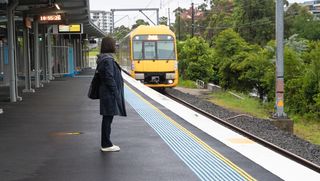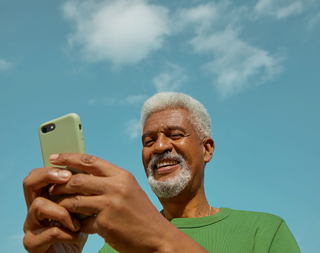My decision to use a white cane
Bella tells the story of how and why she decided to start using a white cane.

Summary
When you have low vision, sometimes there’s this feeling that you’re not “bad enough” to accept help, often just “winging it”. You know you can’t see well, and you just try to “crack on”. People may ask, how do I know when I’m ready? Or when is it the right time to seek assistance. I would say, if you feel unsafe at any point getting from A to B, that’s a sign to consider reaching out for support. You matter and you deserve help.
It was my friend with low vision that posed a question for self-reflection when I told her I was tripping over, “do you think it could be time to try a cane to keep you safe?”.
I decided to start Orientation and Mobility training, sharing my concerns with my instructor, “I worry what my friend’s will say when I use my white cane around them. I worry they might ask questions and judge me. I feel silly”.
My Orientation and Mobility instructor replied, “surely if they are your friends, they will respect you. Surely, everyone you care about just wants you to feel safe".
"Your safety is important and you deserve to feel safe. Learning these skills will not only support you now but into the future, wherever your journey leads you.”
It was a need to feel safe, that made me realise I needed the white cane. What if I miss something? What if I injure myself? I knew that I didn’t want to take that risk anymore.
There are different types of cane. You don’t have to jump straight in with a marshmallow or ball tip, you could start with an ID cane to help double check the environment around you. This can help you adjust to holding a cane and being seen to have low vision. That piece of “being visible” with your disability also helps you to slowly start adjusting to this part of yourself, your reality and learning what you need.
SeeWay contributor Bella.
Your lived experience with vision changes might be exactly what someone else needs to hear. Whether it's a tip, a story or something you've experienced or learnt along the way, if you'd like to share, we'd love to listen. Write or call us at:
Did you find this article helpful?
Share your thoughts and help us make our resources better for everyone.
Enjoying the content?
Start building your profile to access personalised support, resources, and tools tailored to your eye health journey.

